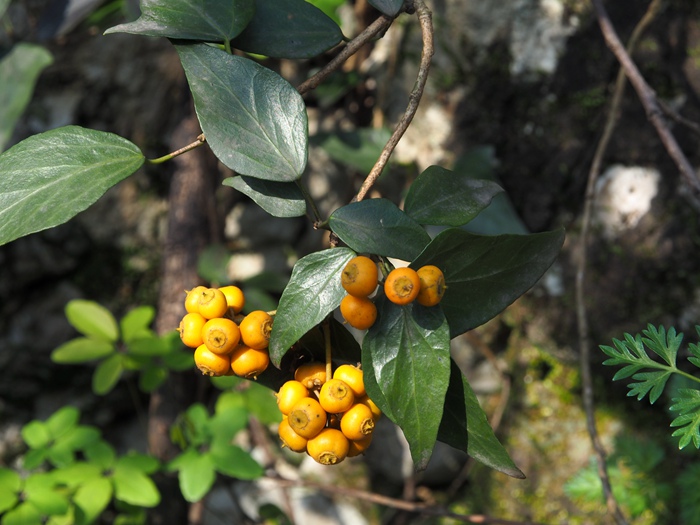- Scientific Name: Hedera sinensis (Tobler) Hand.-Mazz.
- Ref: Symb. Sin. 7:693. 1933
- Synonyms: Hedera himalaica var. sinensis Tobler; H. nepalensis var. sinensis (Tobler) Rehder
- English Common Name: Chinese ivy
- Chinese Common Name: 常春藤 chángchūn∙téng, 中华常春藤 Zhōnghuá chángchūn∙téng, 爬树藤 páshù∙téng, 爬墙虎 páqiáng∙hǔ
- Japanese Common Name: シナキヅタ [シナ木蔦] shinakidzuta
- Family: Araliaceae
- Genus: Hedera
- Distribution: Forests, roadsides, rocky slopes, usually climbing on trees or rocks; from near sea level to 3500 m. Anhui, Fujian, S Gansu, Guang dong, Guangxi, Guizhou, Henan, Hubei, Hunan, Jiangsu, Jiangxi, S Shaanxi, Shandong, Sichuan, S Xizang, Yunnan, Zhejiang [Laos, Vietnam].
- Photo: Hangzhou, Zhejiang
Shrubs scandent. Young branches with ferruginous scales. Petiole 2-9 cm, slender; leaves dimorphic, those on sterile branches entire or 3-lobed, usually triangular-ovate or triangular-oblong, rarely triangular or sagittate; those on fertile branches elliptic-ovate or elliptic-lanceolate, rarely ovate or lanceolate, blade glabrous or with sparse scales abaxially, venation distinct on both surfaces, base broadly cuneate, margin entire, apex acuminate. Inflorescence a terminal umbel or a small raceme, with ferruginous scales; primary axis 1-3.5 cm. Calyx rim ca. 2 mm, subentire. Petals 5, 3-3.5 mm. Ovary 5-carpellate. Fruit red or yellow at maturity, globose, 7-13 mm. Fl. Sep-Nov, fr. Mar-May. (Flora of China)
